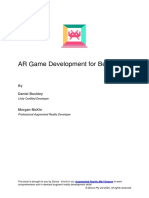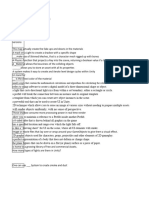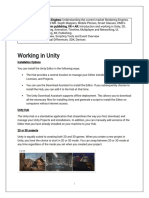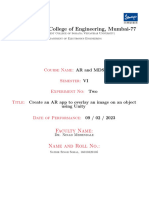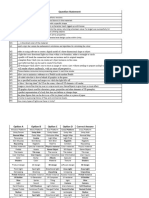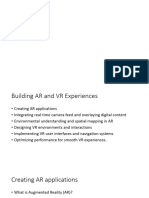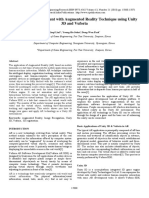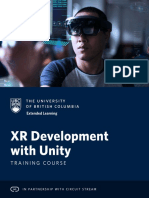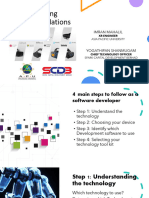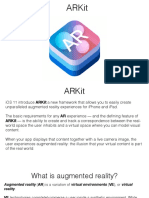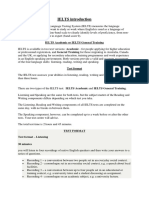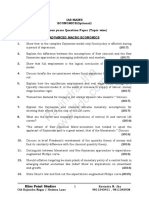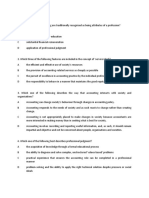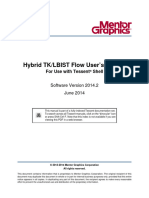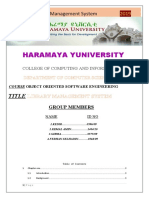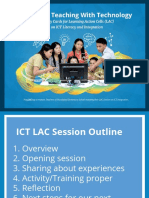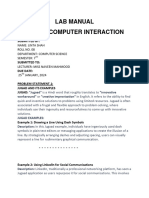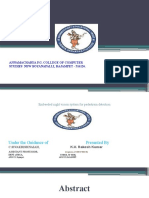0% found this document useful (0 votes)
35 views30 pages12 AR Unity
The document provides an overview of Augmented Reality (AR) in Unity 3D, detailing its definition, functionality, and the tools available for development such as ARKit, ARCore, and AR Foundation. It explains how AR Foundation facilitates multi-platform AR development and outlines the essential components and subsystems required for creating AR experiences. Additionally, it covers installation, configuration, and management of AR features within Unity projects.
Uploaded by
CRISTIAN MONTESANOCopyright
© © All Rights Reserved
We take content rights seriously. If you suspect this is your content, claim it here.
Available Formats
Download as PDF, TXT or read online on Scribd
0% found this document useful (0 votes)
35 views30 pages12 AR Unity
The document provides an overview of Augmented Reality (AR) in Unity 3D, detailing its definition, functionality, and the tools available for development such as ARKit, ARCore, and AR Foundation. It explains how AR Foundation facilitates multi-platform AR development and outlines the essential components and subsystems required for creating AR experiences. Additionally, it covers installation, configuration, and management of AR features within Unity projects.
Uploaded by
CRISTIAN MONTESANOCopyright
© © All Rights Reserved
We take content rights seriously. If you suspect this is your content, claim it here.
Available Formats
Download as PDF, TXT or read online on Scribd
/ 30
